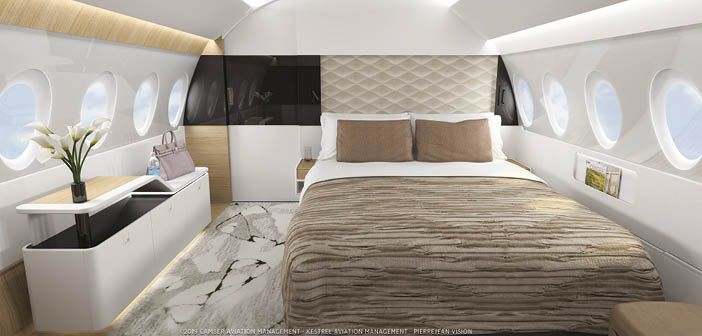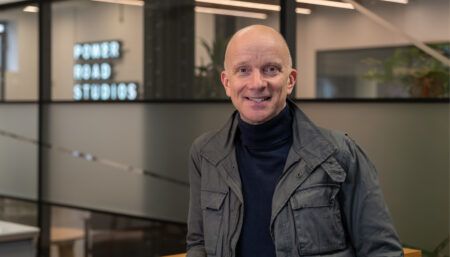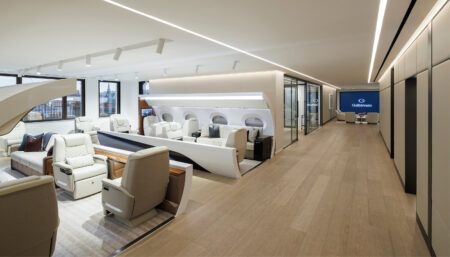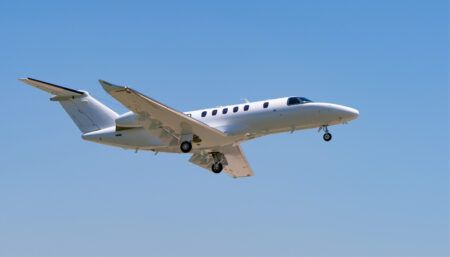Stephen Vella of Kestrel Aviation Management and Tom Chatfield of Camber Aviation Management present an A220 corporate cabin concept developed with Pierrejean Vision, F/List and Flying Colours
An alternative is required to ultra-long-range business jets with limited cabin space and airliners characterised by high acquisition costs combined with greater owner risk. In the case of the former, the attractiveness of such incredible range is limited by the requirement to carry additional flight deck crew on such long journeys, which may require use of the passenger cabin. Meanwhile, airliners are sold green, that is, without a cabin installed, requiring the buyer to contract a designer, a completion centre and an experienced project manager to oversee the complex process from aircraft purchase, through design, build, certification and entry into service. The buyer, who rarely has experience in this field, must invest considerable effort while shouldering all of the budget and schedule risk.
Camber Aviation Management, Kestrel Aviation Management and Pierrejean Vision have partnered to create a solution. This team has created and delivered numerous narrow- and wide-body Airbus and Boeing VIP aircraft for private individuals, corporations and heads of state over the past 20 years.
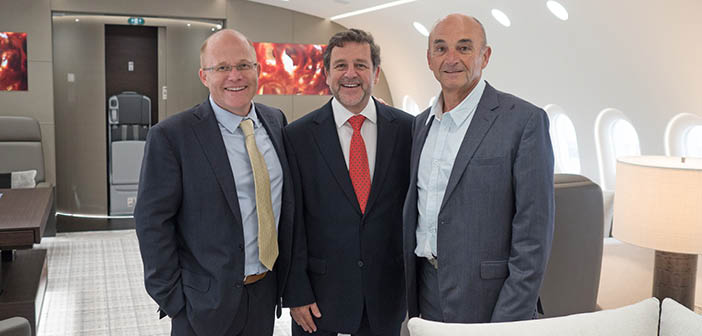
Market requirements
The team canvassed the market and identified several key features that a new design would require. These included a spacious cabin capable of seating of 10-32 passengers; modular, configurable layouts to suit different missions; and global, high-speed connectivity with entertainment options that match those enjoyed on the ground. The aircraft would also need to offer a max-payload range covering 90% of the missions operated by current large-cabin aircraft; be supported by exceptional operational and technical product service worldwide; and be at least 20% less expensive to own and operate compared to direct competitors. The team concluded there was only one platform that met the defined criteria – the Bombardier CSeries 300, now the Airbus A220-300.
The A220 met all of the market’s expectations but the differentiator would centre on a unique cabin design and the quality of the finished aircraft. The team partnered with F/List and Flying Colours Corporation to refine the detail design and perform engineering studies. F/List was chosen for its exceptional skills in fabricating VIP jet cabin interiors while Flying Colours was selected for its extensive engineering and cabin integration skills. Together, the team invested over 18 months to refine the detailed design of the A220 cabin and its associated systems.
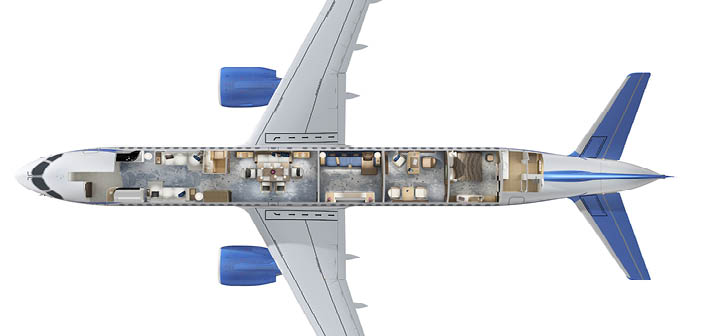
Project aims
As well as creating a beautiful, state-of-the-art cabin, it was vital to offer a broad range of aesthetic customisation options, incorporate clever engineering and production strategies to shorten the outfitting cycle, and drastically reduce cabin non-recurring costs through intelligent pre-engineering custom configurations.
The design is centred on a seven-zone modular cabin comprised of three fixed and four variable zones. The forward, mid and aft zones are fitted with common entry and galley, VIP lavatory and closet, and master suite with queen-size bed and en-suite washroom featuring a steam shower, respectively.
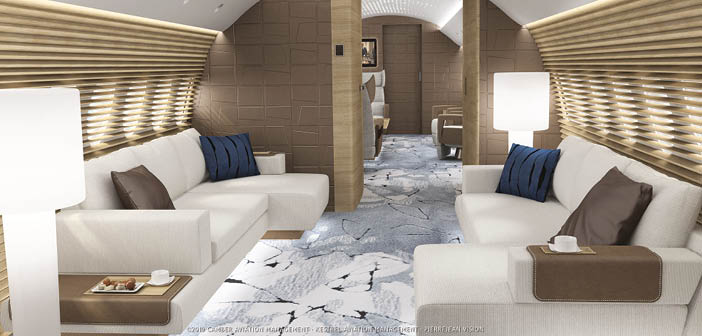
Customisation
The flexible zones enable each buyer to create their own layout. The buyer can, for example, select a spacious lounge that converts to a dining room with a unique convertible table design, a cosy forward cabin, a bespoke media lounge with a 75in screen and tuned Dolby surround sound, an expansive private office or children’s bedroom. True customisation is achieved by applying the client’s preferred colour palette, materials and finishes.
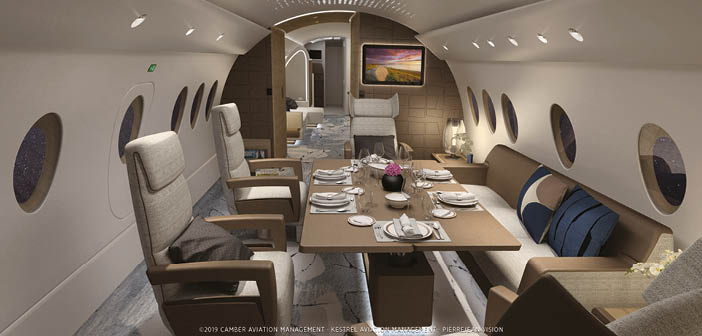
Technology
Key equipment includes unique VIP cabin lining and lighting styles to emphasize different cabin zones; seating designed to provide comfortable sleep options; galley inserts including steam and induction ovens, an espresso maker and wine chiller; a dual AVOD IFE system with massive library and wireless streaming to monitors, tablets and personal devices; and global Ku- or Ka-band voice/data satellite communications. The lighting, IFE, window shades and flight attendant call functions can be controlled from passenger tablets.
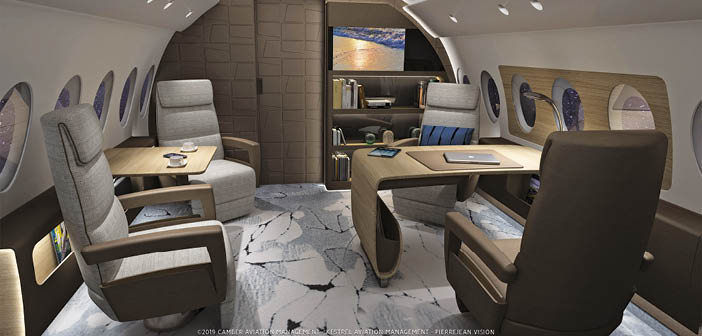
The distinctive modular concept was developed to simplify the cabin design process, reduce completion build times, and lower production and non-recurring costs over a number of aircraft. Together, these design goals significantly reduce manufacturing and certification costs – essential in achieving the right price point in the market while providing a bespoke and highly capable aircraft. Importantly, this technology allows the team to design a cabin that combines functionality and aesthetics together with reliability and ease of maintenance, a combination that cannot be easily realized for one-off ‘prototype’ designs in legacy airliners.
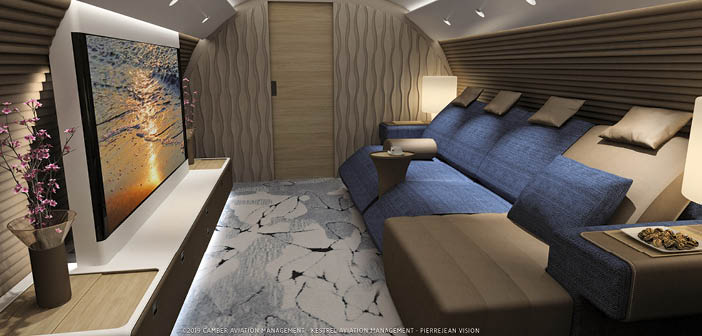
About the authors: As CEO of Camber Aviation Management, Tom Chatfield leads a team of experts that guide and manage the complex process of transforming an airliner to a corporate jet. Stephen Vella is CEO Kestrel Aviation Management, which has turnkey project managed the purchase, cabin design, outfitting and sale of 50 large corporate aircraft, including the world’s first BBJ787.
Images: ©Camber Aviation Management, Kestrel Aviation Management and Pierrejean Vision 2019.


